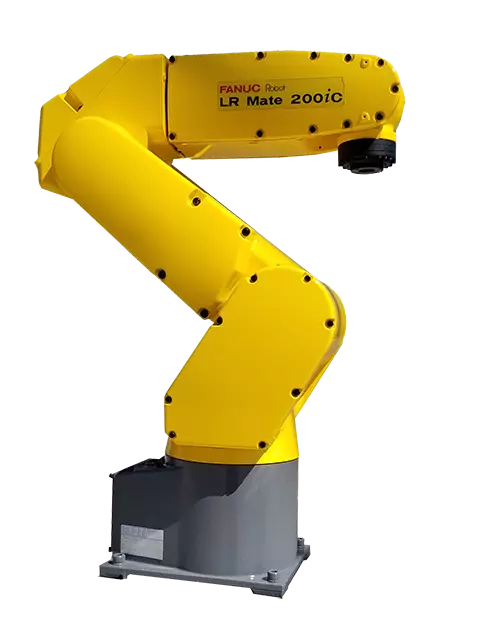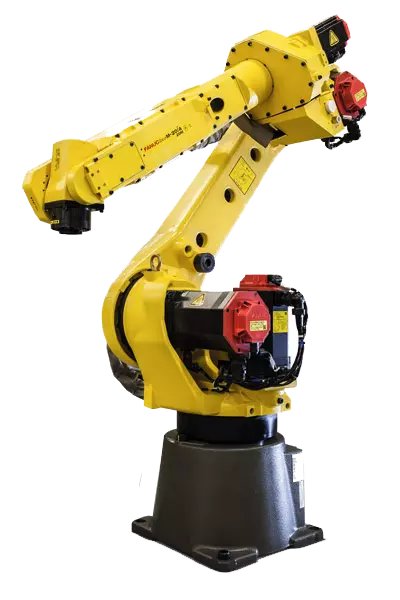Hollow Arm Robots





Industrial robots can vary greatly from model to model. There are small industrial robots, large robots, those capable of lifting heavy payloads, and those with extended reaches. Not only can robots vary by size, structure, reach, axes, or payload but also by special features they are designed with. One of those special features is a hollow arm configuration.
A hollow arm robot is one that features a completely hollow arm and wrist. The hollow arm and wrist allow for seamless end-effector integration along with the ability to integrate cabling inside the robotic manipulator arm. Hollow arm designs are becoming more common as many new industrial robot models have this particular feature. Last year FANUC updated its R-2000i robots with the release of the R-2000iD series. The series features the R2000id/100FH, R2000id/210FH, and R2000id/165FH all of which have hollow robotic arms. The hollow arm configuration of FANUC’s R-2000iD robots is a major update, making them even more durable than their predecessors.
Applications for Hollow Arm Robots
Hollow arm robots are ideal for automating any applications requiring process cables. Some of the most common include material handling, spot welding, arc welding, and painting. The FANUC Arcmate 120ic is a hollow arm arc welding robot. The Motoman MA1400 is another hollow arm robot used for welding automation. Internalizing process cables by running them through the robotic arm prevents them from interfering with the robot’s operation or coming into contact with peripheral equipment. This is why many manufacturers are opting for automation with robots that have hollow arms for applications with process cables.Benefits of Hollow Arm Robots
A hollow robotic arm design can be beneficial to the robot’s overall performance and the manufacturing process as well. The main benefits of hollow arm robots include:- • More Reliable Operation - Integrating the process cables inside the robot arm allows for a more reliable operation from the articulated robot. Internal cabling prevents interference with the robot’s operation. Cables located on the outside of the robot arm can snag on equipment, disrupting the application process. In addition, external cabling can wear prematurely which could potentially lead to the robot malfunctioning. The hollow arm of the FANUC M-20ia allows it to operate smoothly and consistently.
- • Prevents Cable Wear - Another benefit of hollow arm robots is the prevention of premature cable wear. Internal cabling will extend the lifespan of your process cables. External cables can wear quickly as they are routinely exposed to the various elements of an industrial environment. They can easily wear prematurely or tear due to snagging. Process cables can be expensive to replace, but with internal cable routing replacements are needed less often.
- • Reduces Maintenance - Hollow arm robots require less maintenance than those with external cabling. Since running the cables through the robot arm protects them from wear and tear, they will need maintenance less often. It also makes it less likely the cables will need to be replaced, helping to save on maintenance costs. The less time spent on maintenance the greater the uptime for your robot which will translate to higher productivity.
- • Easier Off-line Simulation - Hollow arm robots also make off-line simulations easier since technicians do not have to account for the potential and unexpected movements of the cables. Off-line simulations are more accurate as a predictive tool for a robot’s operation since the potential for cable interference is eliminated.